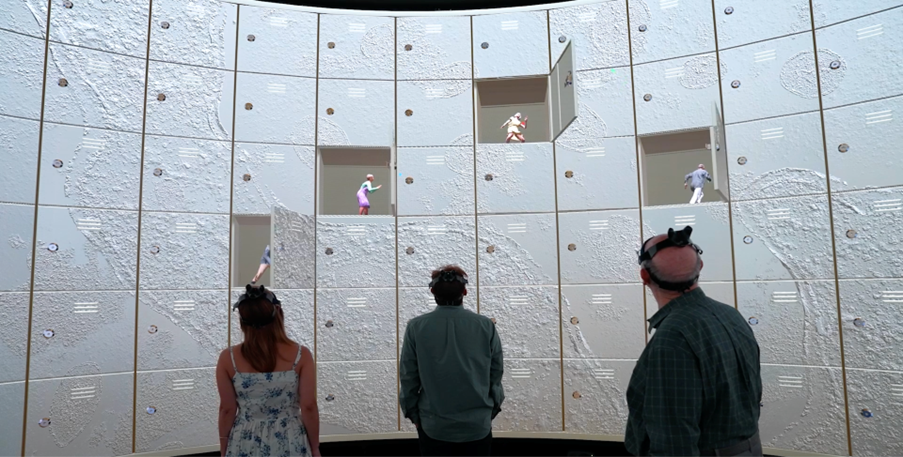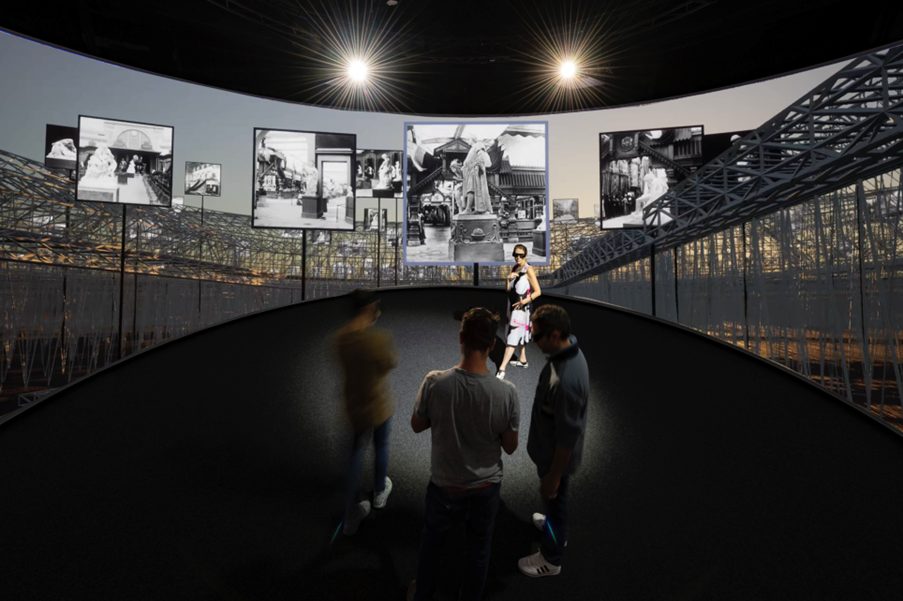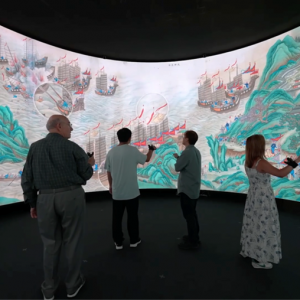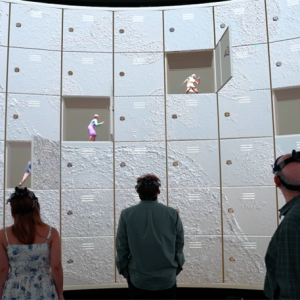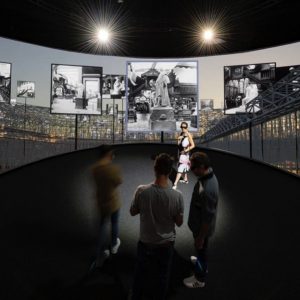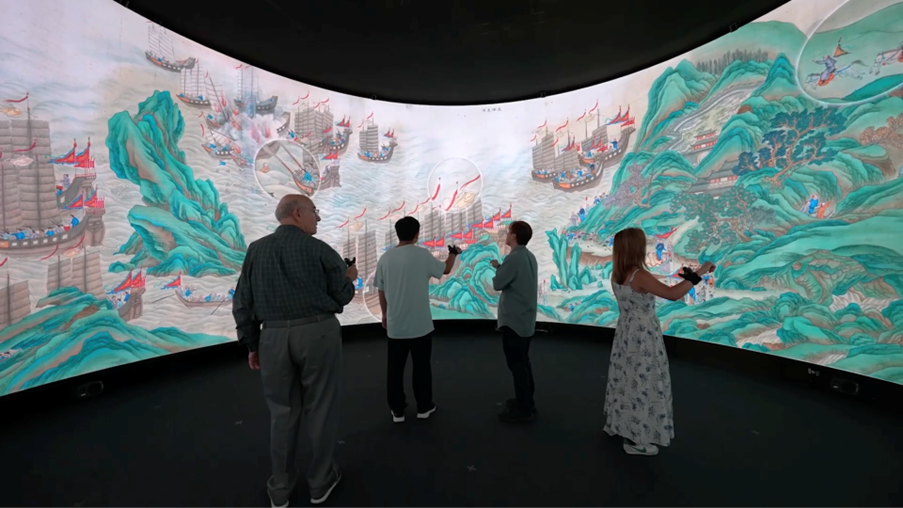
Future Cinema Systems: Next Generation Art Technology is funded by the Innovation Technology Fund in Hong Kong, and is being undertaken in collaboration with HK Baptist University (HKBU), CityU of Hong Kong and Cameron Pace Group (James Cameron filmmaker).
The objective of Future Cinema Systems (FCS) is to use the latest technologies to create a prototype allowing users to virtually experience history, culture, and entertainment from anywhere in the world, in immersive, interactive images, while being interconnected.
FCS will deliver three integrated technological innovations: 1) visualization engine; 2) co-evolutionary narrative engine; and 3) human-computer interaction engine, and leverage novel experiences of moving image archives, heritage places and performances. The interactive innovations will be powered by AI, computer vision, deep learning, visual analytics, virtual reality, interactive narrative, and emergent and generative aesthetics.
The results can be exploited by artists and creative industries and provide innovative ways of satisfying demand for sophisticated content, narrative enrichment, and intense global interest in digital entertainment. FCS gives Hong Kong and Switzerland the opportunity to kick-start the foundation for a new industry that will have a global impact. It will help promote Hong Kong as Asia’s creative capital and make it a magnet for global talent and drive high-end visualization research in Switzerland. This project is a worldwide first to develop and create an integrated system for the visualisation and interaction with various types of artistic, cinematic and archival content to create the next generation of interactive immersive experiences. This project will create the framework for a next generation of interactive immersive cultural experiences, applicable across multiple domains in entertainment and creative practice, at an unprecedented scale.
By integrating these technologies into a unified system, this project will drive down the barriers for creative productions across arts, museums and performance practices, while spawning a new industry for immersive interactive experiences. These products will be applicable across other domains such as digital twins for training and sports. The FCS will provide next-generation cinematic and media experience and shall assume the leading position in the area of Art Technology.
The deliverables involved all cutting-edge innovations and developments that can facilitate commercial exploitation. The system is a versatile platform that could be exploited by artists from all fields, with a focus on archives, the representation of place (such as cultural heritage) and the performative arts (cinema, theater, music, dance, etc.). It could be widely adopted by different stakeholders in the market and can create substantial value in entertainment and education. The cultural and creative industries, educational industry, travel and tourism industry, as well as the public and non-profit sectors could also be potential targets for the adoption of the system.
Project Deliverables
Future Cinema Systems will deliver four technological innovations:
- A Visualisation Engine: a set of immersive, interactive visualisation resources, including several state of the art 360-degree 3D systems. This includes a new LED visualisation engine at HKBU with a circumference of approx. 2500 cm utilising 400 flat LED modules each 48cm x 48cm, where the angle between adjacent displays is 7.2 degrees and a pixel pitch that provides for high-resolution stereoscopic cognition.
- A Co-evolutionary Narrative Engine: systems for informed intelligence for content retrieval taking advance of machine learning and computer vision.
- A Human-Computer Interaction (HCI) Engine: a novel set of HCI integrations and re-combinations for next-generation interactive experience.
- A set of practical applications in the representation and experience of three aesthetic and cultural domains: 1) The audio-visual archive; 2) the place and space of cultural heritage; and 3) digitally mediated performance.

